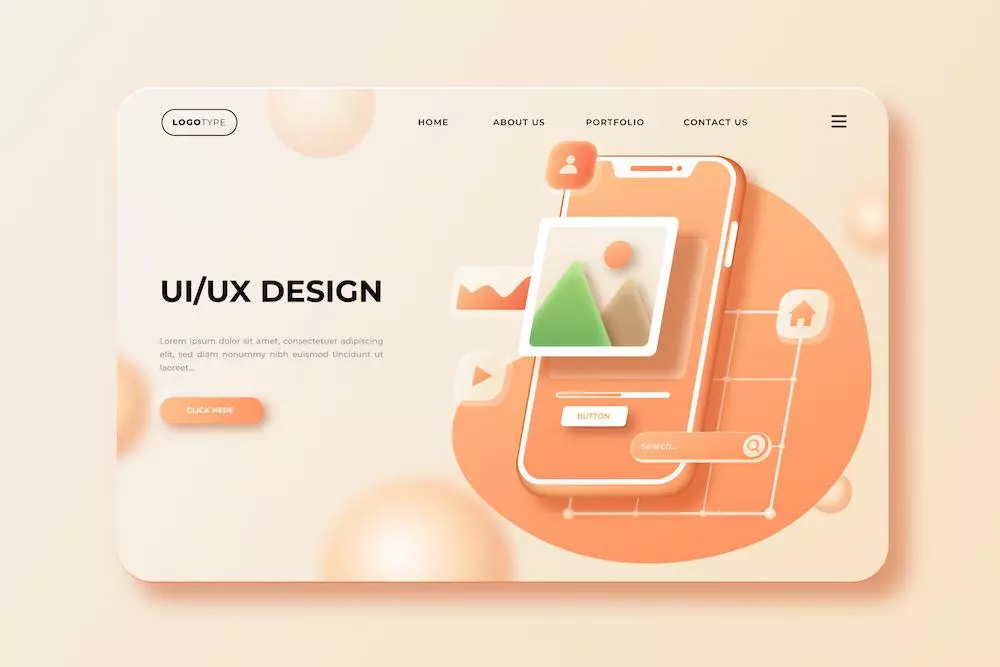
It is very well known that a business website is the company’s face, and if the UI and UX components aren’t appealing to your users, you’ll lose them quickly. In this article, we will quickly look at some of the risky UI/UX trends. These trends are not ineffective. They just need to be used with some caution.
These are the 6 main risky UX/UI trends that need you to be careful.
1. Bright Colors Lead to the Dark Side

Too bright or even gaudy colours are often not visitors friendly; hence, it is important to select a well-balanced colour scheme that encourages users to explore your full website rather than shutting it immediately.
Avoid using strong colours for text and backdrop at the same time to make your website’s UI design pleasing to the eye of visitors and users. Unless you want your website visitors to be upset, stick to colours that are pleasing to the eye.
2. Too Small for the Big Picture
Although overcrowding web pages with small icons and other elements is a trend now yet not appropriate for all websites. Too many minor details distract the concentration from the major information.
If you only want to fill up space with small, non-functional elements, you should avoid it because the usability of your website will suffer. However, if a few little details are meant for a specific reason, such as web space division, you are free to use them, but not in excess.
3. Video, Music & Animation – Balance Rules
Animation and video are visual tools that can set your website out from the crowd, but they may not be right for you. These images are extremely effective since they improve storytelling and make it more participatory. They can, however, be bothersome if designers do not construct video or animation in a continuous loop.
Adding music to your website is only a smart idea if the music is muted by default. Otherwise, even if the song is relaxing, they are likely to close the website as soon as they hear it.
4. Navigation: Where Traditions Matter

The website’s creative navigation is ideal for showcasing a UX designer’s work portfolio, but it’s not so useful in business. If you want to make your website stand out, use original content and UX design software. Horizontal, multitier, emergent, and other styles of navigation that most users are unfamiliar with might be confusing and misleading.
It’s one of those times when it’s best to put something special on hold. However, if you believe that unique navigation will improve the website, usability testing is essential. Furthermore, when it comes to the design process, you must consider each and every component as well as how it will perform on each page of your website.
5. Use Pop-ups Wisely

Pop-ups are extremely effective techniques for increasing website conversion as well as overall attention to your goods. Although the bulk of modern websites employ various types of pop-ups which makes some users perplexed as to why their expectations do not match reality.
Some pop-ups have no purpose but to upset website visitors, so pay attention to their design, timing, and other factors. Visually, your pop-ups should be unobtrusive, but the buttons should be highlighted. What’s more, don’t put users under stress by asking for their contact information via a pop-up or by displaying it seconds after they visit your website. Also, if the user has already closed the pop-up, don’t show it again, as this would only cause irritation.
6. Stock Photos – Just Don’t Do It!
Stock photographs are beneficial in a variety of ways because of their excellent quality and quick availability. Even though stock photos save you time, they can give your consumers and you a bad impression. People are inundated with information and expect to see original stuff. Stock photographs are very similar, and many of them are visual clichés.
Additionally, if your company has specific colours and branding, you may spend hours looking for photos and images that fit properly. It’s also possible that one of your big competitors will use the identical image on their website.
If you have no other choice but to use stock photos, select only those that are free of logical faults (as seen in the image above) and complement your corporate brand; however, if feasible, alter these images.
Conclusion
All of these design trends have the potential to improve and popularise your website if they are used properly. Otherwise, they’re quite likely to go in the opposite direction. There’s nothing wrong with including all of them on your website, but keep in mind that when something becomes a trend, it’s being utilised a lot. As a result, what has become a trend is no longer original, and is at risk of having a business website that looks like thousands of others.
People today want to see something distinctive while also being user-friendly, so keep this in mind when designing your website’s UI and UX.










